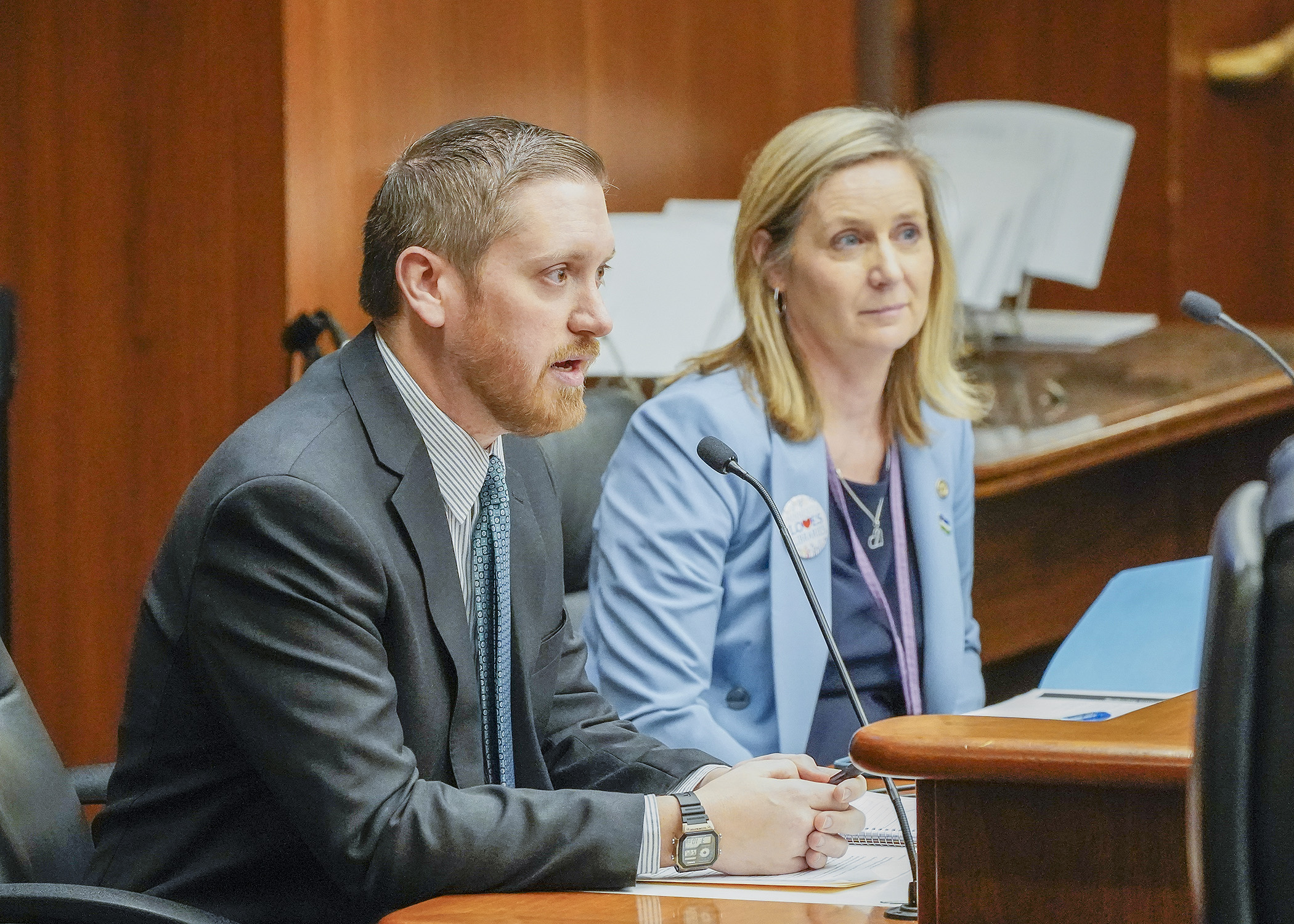Buildings the state’s next focus for lowering emissions

They call it “sip,” as opposed to “gulp.” But it’s actually spelled “CIP,” and stands for the Conservation Improvement Program. Initiated in the Next Generation Energy Act of 2007, it’s a state program that assists homeowners and businesses in increasing energy efficiency and reducing costs.
And now it could help cut back on greenhouse gas emissions, too.
That’s the focus of HF1983, sponsored by Rep. Lucy Rehm (DFL-Chanhassen) that would create a new goal within the Conservation Improvement Program to reduce greenhouse gas emissions in existing buildings. The goal is to have those emissions be 50% lower by 2035 than they were in 2005.
The enhanced CIP program would use what have been found to be the most effective current energy savings programs, combining them with a set of new programs focused upon solutions with the highest overall carbon reduction.
On Tuesday, the House Climate and Energy Finance and Policy Committee laid the bill over for possible omnibus bill inclusion.
“According to the latest biennial report on greenhouse gas emissions from the Minnesota Pollution Control Agency, emissions from commercial buildings are decreasing,” said Jon Kelly, director of government affairs for the Department of Commerce. “Residential emissions, on the other hand, have increased 14%. Reversing this trend will require low-carbon and energy-efficient building technology, investing in building electrification, and retrofitting existing buildings.”
According to the Commerce Department, buildings use 40% of the energy consumed in Minnesota. And the state’s current Climate Action Framework emphasizes making buildings more efficient to support grid stability, lower energy bills and lower greenhouse gas emissions.
Rep. Chris Swedzinski (R-Ghent) questioned the cost to the state if its buildings are required to add additional energy efficiency measures during construction and maintenance.
“My understanding is that the [federal Infrastructure Investment and Jobs Act] has money that we can tap into to improve upon existing buildings,” Rehm replied. “So it’s not going to cost us anything. I think it’s going to allow us to create better buildings that are more efficient.”
Related Articles
Search Session Daily
Advanced Search OptionsPriority Dailies
Speaker Emerita Melissa Hortman, husband killed in attack
By HPIS Staff House Speaker Emerita Melissa Hortman (DFL-Brooklyn Park) and her husband, Mark, were fatally shot in their home early Saturday morning.
Gov. Tim Walz announced the news dur...
House Speaker Emerita Melissa Hortman (DFL-Brooklyn Park) and her husband, Mark, were fatally shot in their home early Saturday morning.
Gov. Tim Walz announced the news dur...
Lawmakers deliver budget bills to governor's desk in one-day special session
By Mike Cook About that talk of needing all 21 hours left in a legislative day to complete a special session?
House members were more than up to the challenge Monday. Beginning at 10 a.m...
About that talk of needing all 21 hours left in a legislative day to complete a special session?
House members were more than up to the challenge Monday. Beginning at 10 a.m...